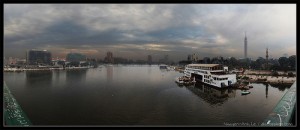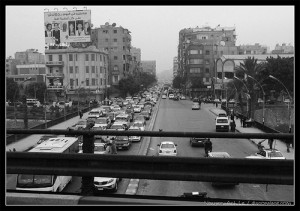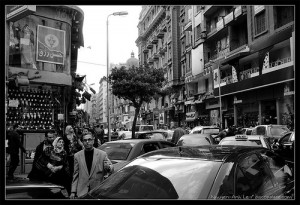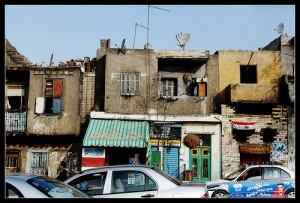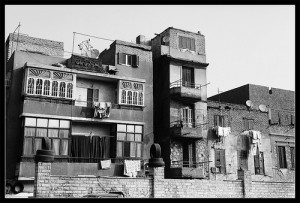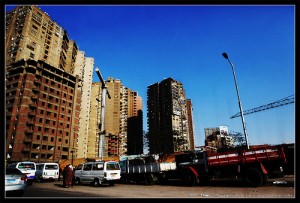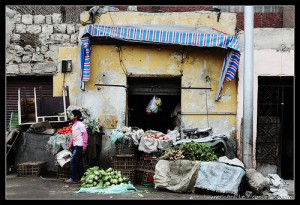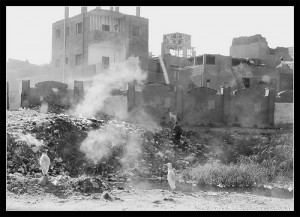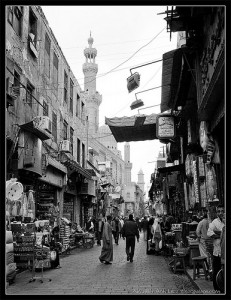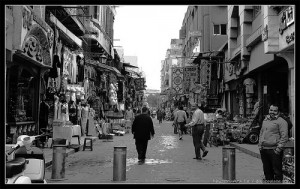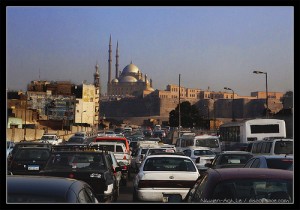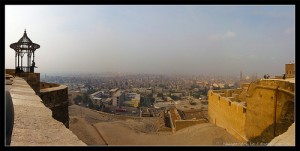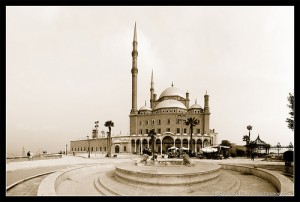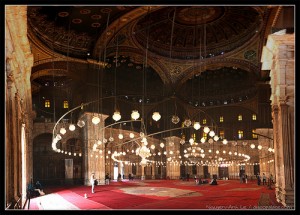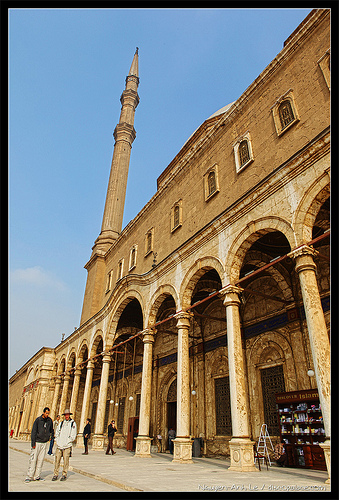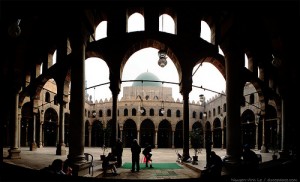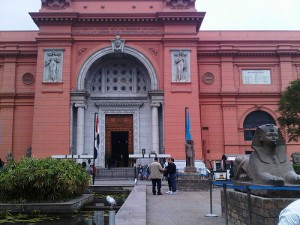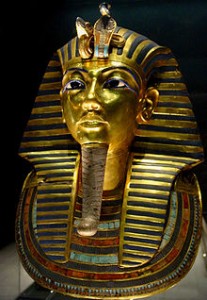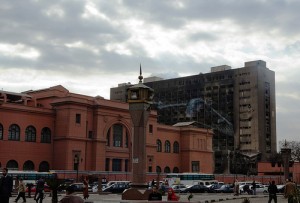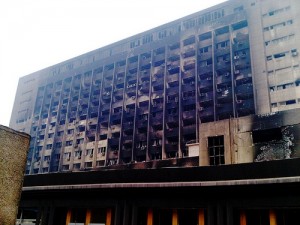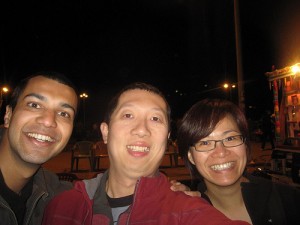Cairo is Egypt’s capital and largest city. With a metropolitan area population of over 15 million, Cairo is around the 15th largest city in the world, the largest in Africa and in the Arab world.
Egypt’s geography is very interesting. It resides in Africa, but it is also the link to Asia and the Middle East, via the Isthmus of Suez. Major waterways, such as the Suez Canal and the Nile Delta go through Egypt. Yet most of the land in Egypt is desert – a vast sea of yellow dunes and dust. Almost the entire population of Egypt lives within 5% of its land, the land through which the Nile flows. The Nile’s delta region begins near Cairo. You can see the river’s influence in Cairo, as high rise buildings, parks, and boats line up along the its banks.
Life in Cairo
Cairo is a busy, crowded city. People are everywhere. Cars are everywhere. The hustle and bustle of city life happens 24 hours a day, seven days a week in Cairo. You can probably find a traffic jam somewhere in the city at any time of the day. We experienced a few ourselves.
In many cities, you can find a few areas in town with beautiful architecture or decoration. In some cities like Paris or Rome, this may be the case anywhere in town. But you won’t see any of this beauty in Cairo, even downtown. We’re in the developing world, baby. It seems that everyone is just too busy making a living; no time or extra money to beautify the city.
It’s no surprise that housing is dense in Cairo. Not as dense as Tokyo, but everything is packed tightly together – from rows of low-rise buildings next to each other, to large high-rise apartments reaching to the sky. The buildings are modest; no fancy materials or decorations – just enough to live in. I noticed that there were tons of buildings under construction. I’m not sure why there is so much, but I guess this a good sign of Egypt’s developing economy.
One of the knocks against Cairo is how dirty it is. When you are surrounded by desert, you are bound to get a lost of dust in the air. If you add dust to the emissions of millions of cars on the road (most of which are old and don’t have catalytic converters), the air gets a bit ugly. Every morning was a hazy, smoggy morning when I was there.
Unfortunately, the trouble doesn’t end with air pollution. Land pollution is just as bad. Poor housing conditions combined with lack of enough sanitation services result in a big mess. Trash can be found everywhere. The canals around town are especially filthy. Oh yeah, don’t drink the water. While most of the water is over-chlorinated (i.e., at least it’s clean), seeing all the trash everywhere doesn’t give you a good feeling. So everyone drinks bottled water. But bottled water results in a lot of plastic bottles contributing to the trash problem…. such a vicious circle…
Despite the poor environment and weak economy, the Egyptian people seem to hold their heads high and look forward with pride. Cairo is a commercial and cultural powerhouse in the region. Let’s just say that there’s a lot of room for civic improvements 🙂
At the Bazaar
To get a good feel for the Middle East, you have to visit a bazaar like the ancient Khan el-Khalili Bazaar in Cairo. The bazaars exude a special vibe that is distinctly Middle Eastern. It’s neat seeing all the shops packed together, shopkeepers hawking their wares, and customers shopping for goodies. American-style malls are ginormous, impersonal, and corporate-driven. People leave you alone because they don’t care if you buy anything. At a bazaar, it’s each shopkeeper’s livelihood at stake, and they really want your business.
Egyptian commercial culture seems very tied to its bazaars – in particular, bargaining. Bargaining appears to be in the blood of every Egyptian (or perhaps most Middle Eastern people). As one of our tour guides said, “even if he were my brother, I would bargain with him.” You have to bargain everywhere in Egypt – at bazaars, at local shops, at tourist attractions, and for taxis. I even had to bargain when buying bottled water. Apparently, it’s fair game to attempt to charge you as much as possible for anything. And when you look like a dumb tourist, the prices get more outrageous. One guy tried to sell me a large bottle of water for 10 Egyptian pounds ($1.60 USD). I walked away and found another guy down the street selling it for 5 pounds. I went to yet another place, bargained, and ended up getting the water for 2 pounds (33 cents). At the tourist shops, you need to counter at around 25% of the asking price to get a reasonable deal. Even though I’m Asian, skill and patience with bargaining seem to have left my blood.
Cairo Citadel
Perched on a hill in the middle of Cairo is the Citadel. Built in the 12th Century CE by the great Saladin, the Citadel overlooks the city and protects it from invaders. It features intact city walls and a large complex of buildings, including mosques and museums. You can get a great view of the city from the Citadel. On a clear day (are there any???), I’m told that you can see all the way to the Pyramids at Giza.
Mosques
Although Egypt is a secular country, around 90% of its people are Islamic. The remaining 10% are Coptic Christians, which are closely related to Greek Orthodox. It’s an interesting experience being in an Islamic country. You can’t escape Islam, especially with the Call to Prayer sounding through loudspeakers, five times a day (including at 5am!).
Cairo features some fantastic Islamic mosques. The one shown above and below is Muhammad Ali Mosque, located within the Cairo Citadel. No, it’s not the American boxer. The mosque was built between 1830 and 1848. It’s the most recognizable part of the Citadel and is easily seen from far away in the city.
Another mosque located within the Citadel is the Al-Nasir Muhammad Mosque, shown below. It was built in the 14th Century. The architecture of Muhammad Ali Mosque is considered of “foreign” design – it’s of Ottoman/Turkish style (the Ottomans ruled Egypt for a while). On the other hand, Al-Nasir Muhammad Mosque is of truly Arabic design.
Downtown Cairo
Downtown Cairo is located near the Nile. One of its major landmarks is the Egyptian Museum. It boasts a vast collection of artifacts from ancient Egypt. Although the museum could use a lot more funding and improvement of its displays, the content is impressive.
The highlight of the museum is the contents of the Pharaoh Tutankhamun’s tomb. Tutankhamun was no special ruler. We just know about him because his tomb was the only one that was fully intact when it was discovered (apparently grave robbers missed it). The jewelry, weapons, famous mask, etc. are very cool to see.
Next to the Egyptian Museum is the headquarters of the National Democratic Party of Egypt. Normally, such a building would not be a landmark. But as you can see in the photos, the building burned down. The National Democratic Party had become the single power in Egypt – the party of which ousted leader Hosni Mubarak was the head. On January 25, 2011, the Egyptian revolution began. Protests turned into violence, and as a result, this building was set on fire. There was even a damage to the artifacts in the Egyptian Museum – a shame. Later, Mubarak stepped down, party leaders stepped down, and now the party is defunct.
Speaking of the Egyptian revolution, Tahrir Square (aka Liberation Square) is just down the street. I had never heard of it, until I saw TV footage of the protests and violence from the revolution. At the time, I didn’t think I would be setting foot there, less than a year since the revolution began. Even a few weeks before my trip, additional violence flared at the square. Nonetheless, we felt compelled to check it out for ourselves. Viva la revolucion!! 🙂
Even though Egypt’s main attraction is its history, I found a lot of value in experiencing its current events. The Egyptian revolution isn’t just limited to Egypt; it was the catalyst for the “Arab Spring” that has erupted in the region – Libya, Tunisia, Syria. Maybe one day, the Middle East will be a more democratic, orderly, and peaceful place. It would be cool to say that I visited there, at the beginning of the new era.
Related links:
